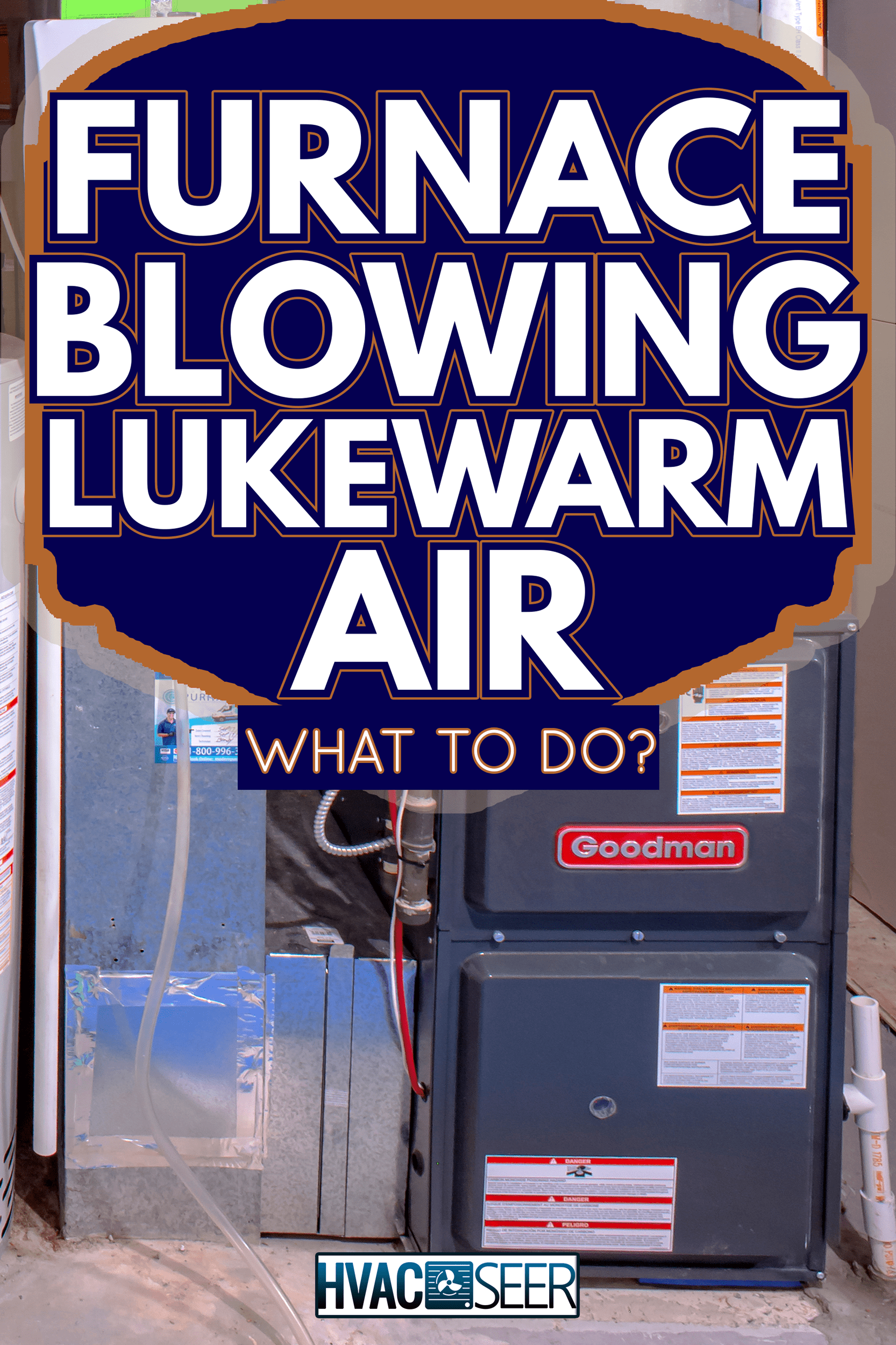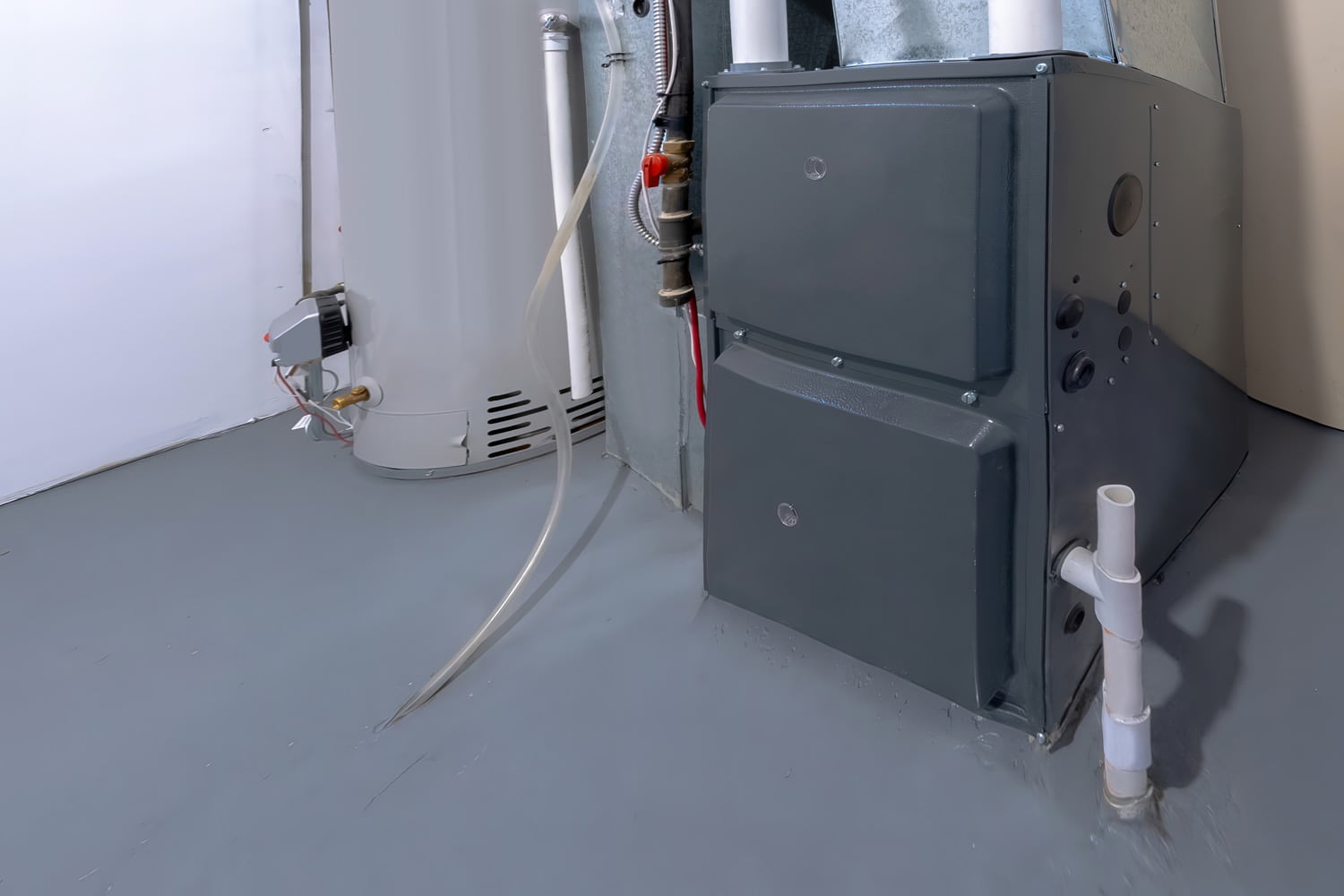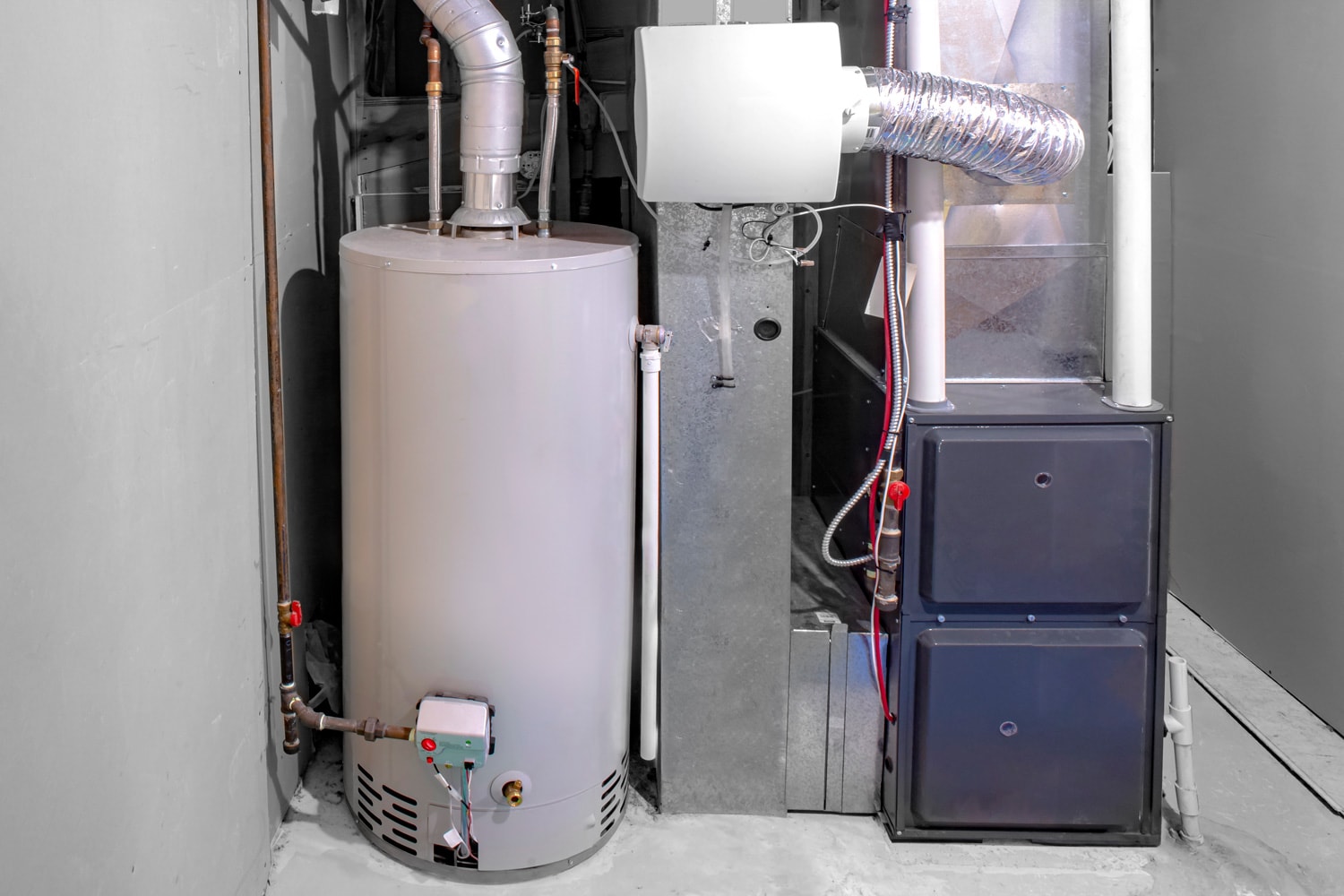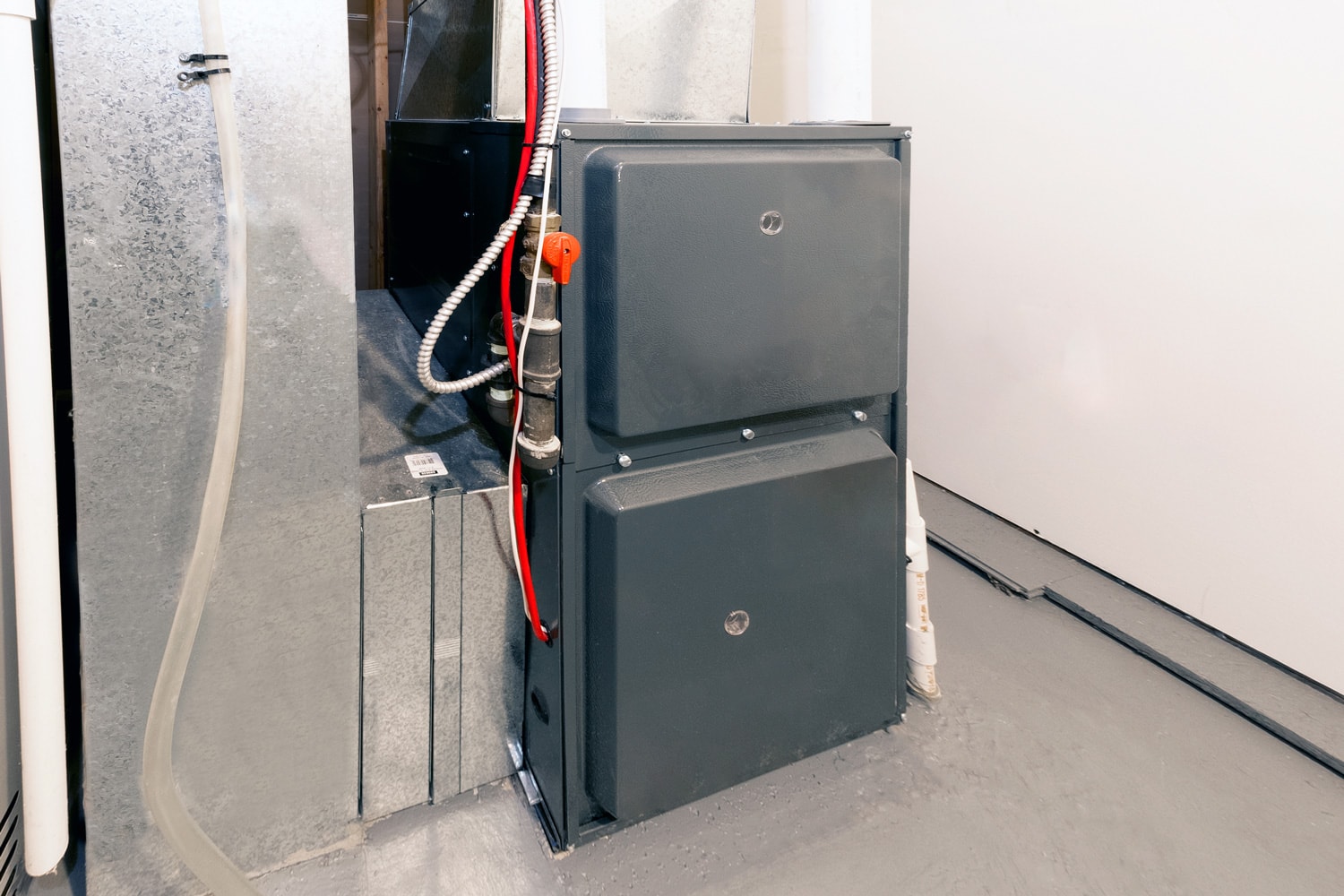There may have been a time you expected hot air from your furnace, but it was lukewarm at best. This would make you wonder about the cause of the problem and what could be done to solve it. Fortunately, we have done the legwork for you, and here is what we found.
A furnace may start emitting lukewarm air for various reasons. Do the following when your furnace starts blowing lukewarm air:
- Check the setting on your thermostat.
- Check your air filter for blockages.
- Inspect the air duct.
This problem can be easily solved when its source is detected. Keep reading as we provide you with some of the common reasons why your furnace emits lukewarm air and how to tackle the problem.

What Should I Do When My Furnace Starts Blowing Lukewarm Air?

Your gas furnace may not be working due to various problems, some of which are complex and others simple. It is better to leave the more complicated issues of thermocouples, wiring, and heat exchanger to a professional. But, there are things you can do before calling an HVAC technician, some of which include:
Check The Setting On Your Thermostat
When your furnace starts blowing lukewarm air, the first thing to do is to check the setting on your thermostat. This is because it may have been set to the "Cool", which will prevent your furnace from emitting hot air.
Check Your Air Filter For Blockages
Furnace filters usually trap dust, debris, and dirt. When this happens, airflow gets restricted, causing the heat exchanger to overheat. This in turn affects the way the furnace work. You should check your filter every month and try replacing them every three months. This is to keep them in working order.
Inspect The Air Duct
When you notice that your furnace is blowing lukewarm air, you should check the air duct to know if it is blocked. Blockages in air ducts can restrict the flow of return air, which can strain the heat exchanger in your furnace.
Why Is My Furnace Blowing out Lukewarm Air?

Heating your home becomes a necessity when the weather gets cold. When the furnace is running, you expect a consistent flow of warm air from your vents.
However, if you turn on your furnace and the air coming out of the ventilation system is merely lukewarm, you may question what might have caused it. Here are the common reasons your furnace may blow out lukewarm air:
Faulty Ductwork
To avoid a loss in air pressure, the ducts that carry warm air from your furnace to the vents must maintain a tight seal. Not only will a leak in the ventilation system risk air pressure, but it will also allow air from other sections of the home, most of which is colder than the air from the furnace, to get in.
Bad Thermostat
The problem of lukewarm air could be caused by a broken thermostat that is either misreading indoor temperatures or not properly adjusting the furnace temperature.
Blocked Air Filter
A blocked air filter can cause your furnace to emit lukewarm air. The air filter in your furnace needs regular maintenance so it will not get blocked. This can lead to more serious problems if not taken care of.
How Warm Should Air Coming Out Of The Furnace Vent Be?
It is recommended that the temperature of the air that flows out of your vent be 16 to 22 degrees Fahrenheit higher than the temperature of the air that flows back into it.
The term "Delta T" refers to a procedure that is frequently applied to determine the temperature of the air that goes out of the vent. The technique is simple, and the steps are as follows:
- Determine what the temperature is in the return vent of your HVAC system.
- Determine the temperature that is coming from the supply vent of the HVAC system.
- Find the difference between the temperature of supply and the temperature of the return.
What Temperature Should Furnace Be Set At?
It is better to set your furnace between 68 and 72 degrees Fahrenheit when you are at home. This is a general recommendation that will help you conserve energy and save money, but it is important to note that individual preferences do play a role in this situation, and there may be members of your household who would prefer it to be warmer or just lukewarm.
If you feel that this recommendation is too cold, especially during winter, you can change the setting. The body can easily get used to a consistent temperature, this means that if you acclimate to a certain temperature, you can reduce it gradually without feeling discomfort.

How Long Should It Take A Furnace To Raise The Temperature?
Generally, it takes a furnace approximately an hour to raise the temperature in your home by a few degrees. You should anticipate that the temperature will feel slightly warmer after around thirty to forty-five minutes, although this may vary depending on the size of the home and the age of the furnace.
How does a furnace work?
A furnace is an appliance that can generate heat for an entire building or just a portion. Sometimes, it is referred to as a "heater" or "boiler" instead. Furnaces play an essential role as a component of a centralized heating system.
In most homes, the HVAC system usually has a furnace that is responsible for warming the air that is blown through it. A thermostat is directly linked to a furnace; thus, any adjustments in the thermostat may cause the furnace to switch on or off.
To choose the ideal furnace for your house, you should evaluate the design and architecture of your home as well as your long-term plans for future HVAC upgrades. For this reason, it is essential for homeowners to have a solid understanding of the system and how it operates.
How a Furnace Works
With a gas-powered furnace, also called a forced-warm air distribution system, you can easily understand how a furnace works. The gas valve, burners, thermostat, heat exchanger, blower, and air ducts are the six primary components of a furnace.
Whenever the temperature drops below the thermostat's set point, the furnace is activated. The burner is activated by a gas valve, which transfers gas to the heat exchanger via the valve. During air combustion, the gas fuel provided through the valve is ignited by the surrounding air, resulting in heat production.
Newer furnaces utilize an ignition switch instead of a pilot light to start the gas flow. Intake air from ducts and gas fuel is converted into heat circulated via your home's air ducts by the heat exchanger. Colder air from the building is drawn into this system through a separate vent and mixed with hot air from the exchanger, where it is heated to the desired temperature.
The furnace plenum receives the hot air after it has been passed through a filter to remove dust and debris. A blower then disperses the warm, fresh air throughout the house via ductwork. The exchanger's flue and vent pipes dispose of any toxic byproducts of combustion to the atmosphere.

Can Furnace Vent Get Blocked?
A furnace vent can get blocked if it is not maintained properly. If you notice the following problem, then your furnace vent may be blocked:
Furnace Not Emitting Warm Air
A furnace not producing warm air is the most prevalent sign of a blocked vent. The inducer fan's inability to activate the pressure switch is to blame for this problem.
Furnace Shutting Off On Its Own
If your furnace turns off on its own, then you may have a blocked vent. You may also notice that it heats up for just a short period of time before turning off.
Hot Panel
The panel on top of the furnace gettings too hot is a sign of a blocked vent. The vent may be obstructed if you notice the front cover is hot.
Unpleasant Odor
If your furnace emits an unpleasant odor when running, there is a probability that the vent is clogged. An obstruction in your furnace's exhaust flue can lead to the buildup of combustion gases in your home.
To Wrap UP
When your furnace starts to blow lukewarm air, all you have to do is check the setting on your thermostat, the air filter, and the duct. After this, you can easily tackle the problem. You can contact a professional if you need help.
If you enjoyed reading this post, here are similar articles you may like:
What Size Filter For A Carrier Furnace?
